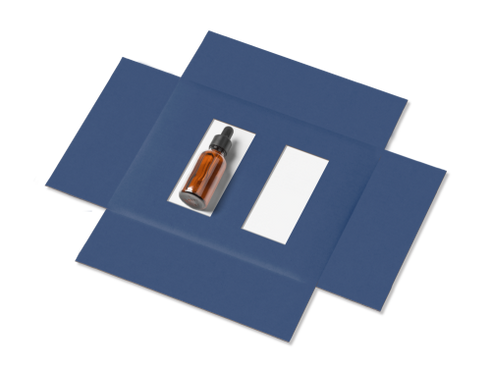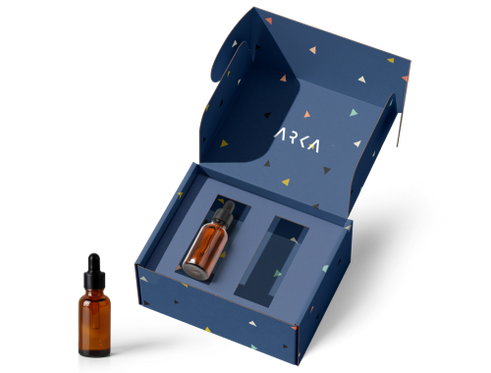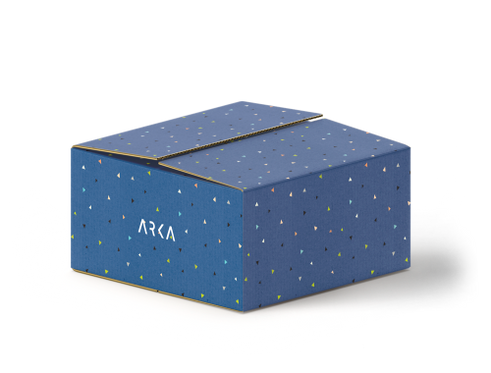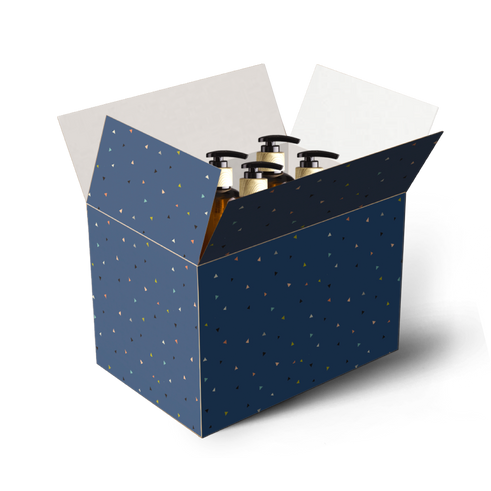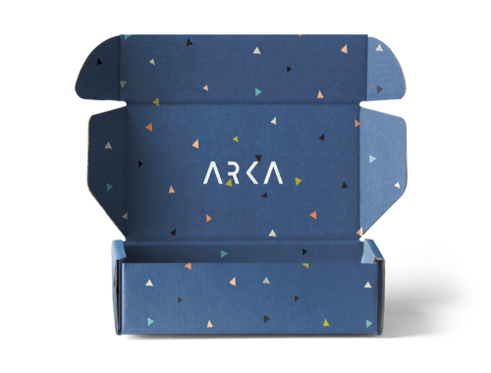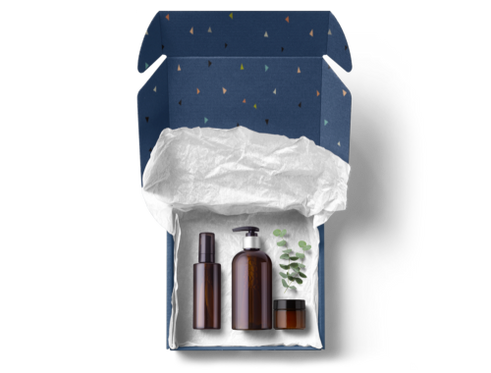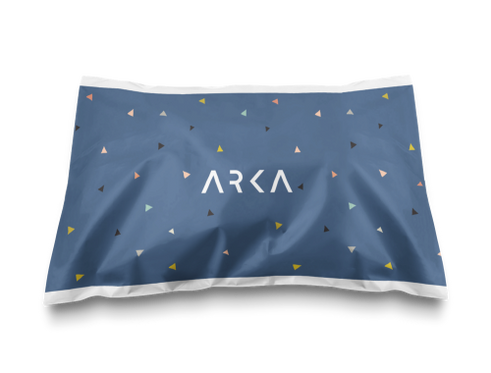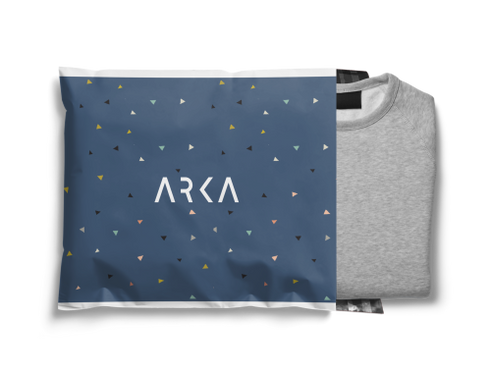Packaging 101: The Complete Guide
- Packaging 101
- Types of Packaging
- Aseptic Packaging
- Blister Packaging
- Biodegradable Packaging
- Bulk Packaging
- Carbon Neutral Packaging
- Circular Packaging
- Clamshell Packaging
- Compostable Packaging
- Cornstarch Packaging
- Corrugated Packaging
- Discreet Packaging
- Ecommerce Packaging
- Flexible Packaging
- Frustration Free Packaging
- Retail Packaging
- Secondary Packaging
- Smart Packaging
- Sustainable Packaging
- What is a PR Package?
- What is a Poly Mailer?
- Packaging Design Ideas
- AI Packaging Design
- Bakery Packaging Ideas
- Bath Bomb Packaging Ideas
- Bath Salt Packaging Ideas
- Body Butter Packaging Ideas
- Body Oil Packaging Ideas
- Body Scrub Packaging Ideas
- Brownie Packaging Ideas
- Cake Packaging Ideas
- Cake Pop Packaging Ideas
- Candle Packaging Ideas
- Candy Packaging Ideas
- Canva Packaging Design
- Chocolate Packaging Ideas
- Cinnamon Roll Packaging Ideas
- Clothing Packaging Ideas
- Coaster Packaging Ideas
- Coffee Bag Design Ideas
- Cookie Packaging Ideas
- Cosmetics Packaging Design
- Cotton Candy Packaging Ideas
- Cupcake Packaging Ideas
- DIY Packaging Ideas
- Dog Treat Packaging Ideas
- Food Packaging Ideas
- Empanada Packaging Ideas
- Etsy Packaging Ideas
- French Fries Packaging Ideas
- Frozen Food Packaging Ideas
- Hair Extension Packaging Ideas
- Handbag Packaging Ideas
- Jewelry Packaging Ideas
- Keychain Packaging Ideas
- Lash Packaging Ideas
- Lip Gloss Packaging Ideas
- Macaron Packaging Ideas
- Minimalist Packaging Ideas
- Mug Packaging Ideas
- New Employee Welcome Kit Ideas
- Packaging Colors
- Packaging Inserts Ideas
- Packaging Logo Design
- Packaging Typography
- Perfume Box Design Ideas
- Pizza Box Design Ideas
- Popcorn Packaging Ideas
- Scarf Packaging Ideas
- Skincare Packaging Design Ideas
- Soap Packaging Ideas
- Sock Packaging Ideas
- Sticker Packaging Ideas
- Sunglass Packaging Ideas
- Sustainable Packaging Ideas
- Tea Packaging Ideas
- Wax Melt Packaging Ideas
- Weed Packaging Ideas
- T-Shirt Packaging Ideas
- Wine Packaging Design Ideas
- What is a Packaging Engineer?
- Types of Packaging Materials
- Chipboard vs Cardboard
- Compostable Packaging Materials
- Alternatives to Plastic Packaging
- Edible Packaging Materials
- Food Packaging Materials
- Are Poly Mailers Recyclable?
- How to Recycle Cardboard Boxes
- How to Recycle Packaging Materials
- Medical Device Packaging Materials
- Mono Material Packaging
- Pharmaceutical Packaging Materials
- Plastic Food Packaging
- Protective Packaging Materials
- Reusing Packaging Materials
- Types of Packaging Foam
- Void Fill Packaging
- What is Chipboard?
- What is Kraft Paper?
- Offset vs Digital Printing
- RGB vs CMYK Printing
- Screen Printing vs Digital Printing
- Screen Printing vs Sublimation
- What is a Dieline in Packaging?
- What is Die Cutting?
- What is Digital Printing?
- What is Flexographic Printing?
- What is Glassine Paper?
- What is Offset Printing?
- What is Spot UV Printing?
- Why is 300 DPI Good for Printing?
- How to Estimate Shipping Costs
- How to Pack Glass for Shipping
- How to Mail a Bubble Mailer
- How to Make a Shipping Label
- How To Measure Box Dimensions and Sizes
- How to Ship Alcohol
- How to Ship Artwork
- How to Ship Books
- How to Ship a Cake
- How to Ship Candles
- How to Ship Chocolate
- How to Ship Clothes
- How to Ship Cookies
- How to Ship Food
- How to Ship a Hat
- How to Ship Jewelry
- How to Ship a Laptop
- How to Ship Perfume
- How to Ship a PC
- How to Ship Perishable Food
- How to Ship Plants
- How to Ship Shoes
- How to Ship Vinyl Records
- Packaging Symbols
- Shipping Large Items
- What is a Delivery Exception?
- What is Shipping Insurance?

Meet Kyla Moore, the dynamic project coordinator at Arka, who is driven by her passion for sustainable packaging. She is dedicated to assisting businesses.
The Power of Packaging Colors: Understanding Color Psychology
To choose the right colors for your brand’s products, it’s important to understand color psychology. By understanding color psychology, you’ll be able to pick the right colors that will evoke the right senses and emotions for your target audience.
Each color has a different meaning and impacts a person’s mind in different ways:
• Serene Blue: Blue represents honesty, serenity, logic, intelligence, harmony, trust, and dependability. This color is commonly used in branding, particularly for science and technology companies.
• Energetic Red: Red represents passion, desire, zeal, excitement, and strength. This color is frequently used by lifestyle and entertainment companies.
• Refreshing Green: Green represents Earth, growth, security, tranquillity, health, nature, restoration, and renewal. It is commonly used by brands with an eco-friendly and sustainability ethos.
• Joyful Yellow: Yellow represents high energy, confidence, optimism, cheer, joy, and enthusiasm. Brands use this color to showcase happiness within their designs.
• Regal Purple: Purple represents royalty, nobility, wisdom, luxury, indulgence, and ambition.

Credits: Robert Katzki
• Soothing Pink: Pink represents femininity, beauty, calm, love, and playfulness.
• Elegant Black: Black represents stability, power, class, sophistication, and authority. Black is sometimes mixed with white in branding.
• Minimalistic White: White represents elegance, premium, balance, simplicity, and purity.
• Radiant Orange: Orange represents fun, creativity, adventure, high spirit, and vitality.
• Earthy Brown: Brown represents earthy tones, comfort, and reliability.
• Luxurious Gold: Gold represents affluence, abundance, success, extravagance, and opulence.

Credits: Studio Blackthorns
The Impact of Packaging Color Combinations and Contrast
In addition to selecting the right colors for your product's packaging, you should consider color combinations and contrast. The colors you pick should mix, match and complement each other because different combinations of colors will impact customers in different ways.
• Complementary colors: Complementary colors consist of two colors that are opposite each other. Examples of this include blue and orange, green and purple, and yellow and blue.
• Analogous Colors: Analogous colors refer to colors that belong to the same family, creating a subdued visual effect. Examples of analogous colors include fuschia, pink and purple, and yellow, green and orange.
• Monochromatic Colors: A monochromatic color is a single color that contains various tints, shades, and tones (e.g., different shades of gray.)
• Triadic Colors: Triadic colors refer to color schemes that combine different color wheel techniques.

Credits: Herman-Scheer
The Art of Packaging Colors in Different Industries
The art of packaging colors varies between different industries:
• Food and beverage: The food and beverage industry is vast, so the colors used depend on the food and drink item. Alcoholic beverages commonly use black colors for branding, soft drinks use bright greens, oranges, and yellows for branding, and brown branding is used for bread and meat.

• Beauty and skincare: Beauty and skincare products use light colors for packaging. The colors used depend on the product itself. For example, sunscreen items normally come in orange, yellow, or gold packaging, while skincare products come in white or blue packaging. For beauty brands with eco-friendly credentials, splashes of green and blue colors are used. You can also check our creative sustainable packaging ideas to get inspired!

Credits: Credits: Attitude, Dieline
• Technology: Technology brands often use blue for company brands but will opt for black and white shades for their products. For example, smartphones normally come in black or white boxes.

Credits: Julian O'hayon
• Children's products: Brands tend to use yellow for packaging children’s products to evoke a sense of cheer, happiness, and joy.

• Fashion and apparel: Different fashion brands use different colors depending on their target audience. Casual fashion brands aimed at young women tend to use pink colors to represent fun and femininity, while premium, designer brands aimed at middle-aged men are likely to use black colors for packaging.

Credits: Nguyen Duc Thang, Nguyen Duc Anh
Choosing The Right Packaging Colors for Your Brand
When choosing the right packaging colors for your brand, here are some aspects to consider:
• Know your target audience: Who is your customer? What do they like, and what are their interests? What are their problems, and how does your business solve these problems? Have you looked at social factors, such as age, socioeconomic status, gender, etc? What emotions would you like to evoke? When you know your target audience, you’ll understand how to market your product. Once you have figured that out, you can pick packaging colors for your items that appeal to your target audience and catch their attention.
• Consistency is key: Packaging colors must remain consistent and in alignment with your brand’s image. If the colors look different across different products and packaging, this could confuse the customer and potentially put them off.
• Highlight brand identity: The colors you choose to use on your packaging must represent your brand’s values and ethos.
• Consider product type: The type of product you sell will determine the colors you’ll use for your packaging. For example, if you sell cruelty-free skincare, then that type of product will suit green, white, and pastel colors. If you sell a device, black would be the right color for your packaging.
• Test before launching: Before launching your packaging with the new colors, test a sample first. See how the sample is received. You can gather thoughts and options from your target audience through market research.

Cultural Considerations in Packaging Colors
When selecting the correct packaging colors for your products, you should consider cultural preferences and tailor your packaging colors to how your target market associates specific colors with their meanings. Also, you must ensure that your colors don’t cause offense. Colors that may seem acceptable in North America may not be acceptable in other regions, so make sure you do your research.
Communicating Sustainability Through Packaging Colors
More than ever, it’s becoming more important to be more sustainable, which customers look out for when shopping with brands. As well as adopting eco-friendly values, your brand needs to communicate sustainability through its colors, so opt for a color palate representing nature, such as green, blue, and earthy tones. Sustainable packaging will help increase customer trust in your brand.

Brands with Successful Packaging Colors
Here are some examples of brands with successful packaging colors.
Coca-Cola's Iconic Red
Coca-Cola’s well-known for its cola drink and its iconic red packaging. The brand chose this color to differentiate itself from barrels of booze. Since then, the color has stuck, making Coca-Cola one of the most recognizable brands in the world.

Credits: James Yarema
Tiffany & Co.'s Timeless Blue
Tiffany & Co. is a brand that symbolizes love, elegance, class, and sophistication. Timeless blue, a turquoise blue, was chosen for the brand because this color was popular in the 19th century, and turquoise was regarded as a perfect gemstone at the time. Now, it’s a color that’s synonymous with Tiffany & Co.

Credits: Behance, Heaz
Whole Foods' Earthy Green
Whole Foods is a company that believes in plant-based living and sustainability, and its Earthy Green reflects that. It’s a brand that’s aimed at the eco-friendly savvy shopper who cares about eating healthily while protecting the planet.

Credits: Fallon Michael
Final Thoughts
To summarize, packaging colors are an essential part of your branding and marketing strategy. With the right colors and designs in mind, you can attract the attention and interest of your target audience, showcase your brand’s values and evoke emotions that connect your ideal customer to your business.
You can also contact us to create an eye-catching packaging design with your brand's unique aesthetics. At Arka, we offer premium custom boxes for any niche; whether you need custom jewelry boxes or cigar boxes, we can help create the most impactful packaging for your business.
FAQs on Packaging Colors
Here are some frequently asked questions on packaging colors.
How often should I update my packaging colors?
An average time of six years is how often you should re-evaluate and update your packaging colors. However, as mentioned before, some brands, such as Coca-Cola and Tiffany & Co., have kept the same colors for a very long time!
Should I use multiple colors or stick to one for packaging?
Typically, a color wheel will help you determine the color combinations for your brand. Depending on your branding, you can choose to stick to one color or use multiple colors. If you use multiple colors, it’s best to stick to using a maximum of three colors to prevent the customer from becoming overwhelmed.
Should I consider cultural preferences when choosing colors?
Absolutely. Some colors are considered off-putting and offensive in other countries, so it’s important to take this into account and do your research before making the final selection.
Can packaging colors influence consumer perception of product quality?
Yes. Color evokes feelings and emotions, and many customers associate certain colors with specific themes. Some colors, such as white, black, purple, and burgundy, can influence customers to assume that a product is high-quality and premium. These colors represent luxury, refinement, and sophistication, influencing purchasing behavior.

